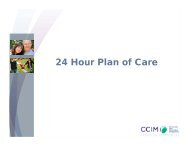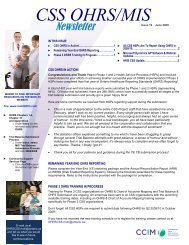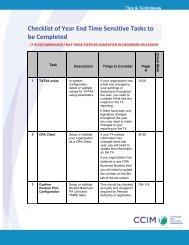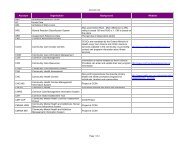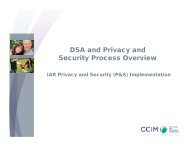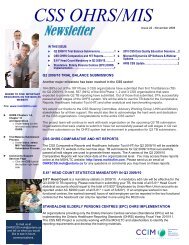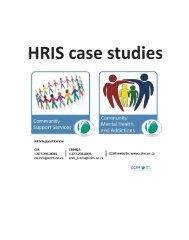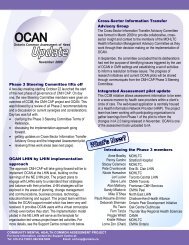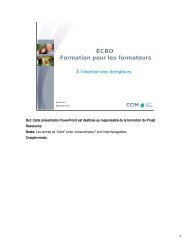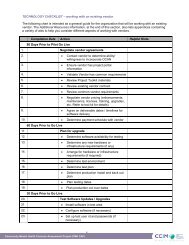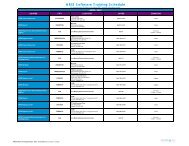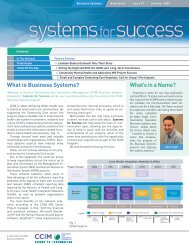RAI-MDS 2.0 Nutritional Care Resource Guide April 2011 - CCIM
RAI-MDS 2.0 Nutritional Care Resource Guide April 2011 - CCIM
RAI-MDS 2.0 Nutritional Care Resource Guide April 2011 - CCIM
- No tags were found...
Create successful ePaper yourself
Turn your PDF publications into a flip-book with our unique Google optimized e-Paper software.
WEIGHT CHANGE CALCULATION EXAMPLE:Current Weight: 50 kgWeight 30 days ago: 53 kgWeight Change: 53 kg - 50 kg = 3 kg loss in weightPercentage of Weight Change: (3 kg / 53 kg) x 100 = 5.6% loss in weightK3a would be coded as “yes”K4: NUTRITIONAL PROBLEMSINTENT:To identify specific problems, conditions, and risk factors for functional decline present in the last 7 days that affect orcould affect the resident’s health or functional status. Such problems can often be reversed and the resident canimprove.CODING CHOICES AND DEFINITIONS:a. Complains about the taste of many foods: May be attributed to health conditions, medications orculturally basedb. Regular or repetitive complaints of hunger: On most days (at least 2 out of 3), the resident asks for morefood or repetitively complains of feeling hungry even after eating a mealc. Leaves 25% or more of food uneaten at most meals: Eats less than 75% of food at least 2 out of 3 mealsper day. (Assuming the appropriate serving size is provided)d. None of the AbovePROCESS: Consult resident’s records (including current nursing plan of care), dietary/fluid intake sheets, dietary progressnotes/assessments Observe the resident at meal times Interview resident/family and direct-care staffK4: WEIGHT CHANGEINTENT: To record all nutritional approaches used for a resident during the last 7 daysCODING CHOICES AND DEFINITIONS:a. Parenteral/IV: Intravenous fluids or hyperalimentation given continuously or intermittently including totalparenteral nutrition (TPN), intravenous therapy (IV) to keep vein open via any IV route. It does not includeadministration of IV medications which would be captured in P1c, “Special Treatments and Procedures”b. Feeding tube: Presence of any type of tube that can deliver food/nutritional substances/fluids/medicationsdirectly into the GI system, e.g. nasogastric tube and jejunum tubec. Mechanically altered diet: A diet specifically prepared to alter consistency of food in order to facilitate oralintake. Examples include soft solids, pureed food and ground meat. Diets for residents who can only takeliquids that have been thickened to prevent choking are also included.d. Syringe (oral feeding): Use of syringe to deliver liquid or pureed nourishment directly into the mouthFor Information: 416.327.7625 4ltchrai@ontario.ca4



